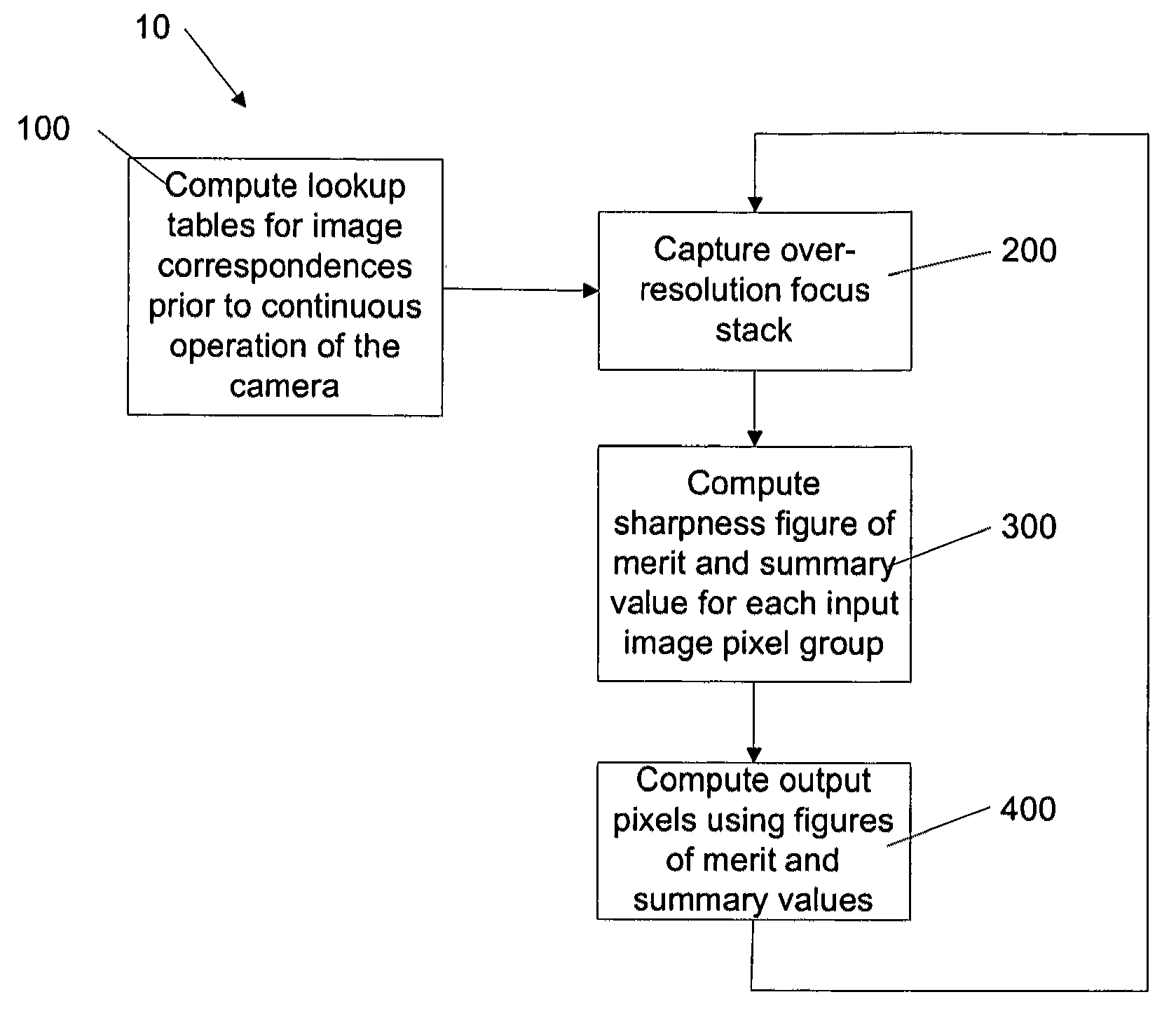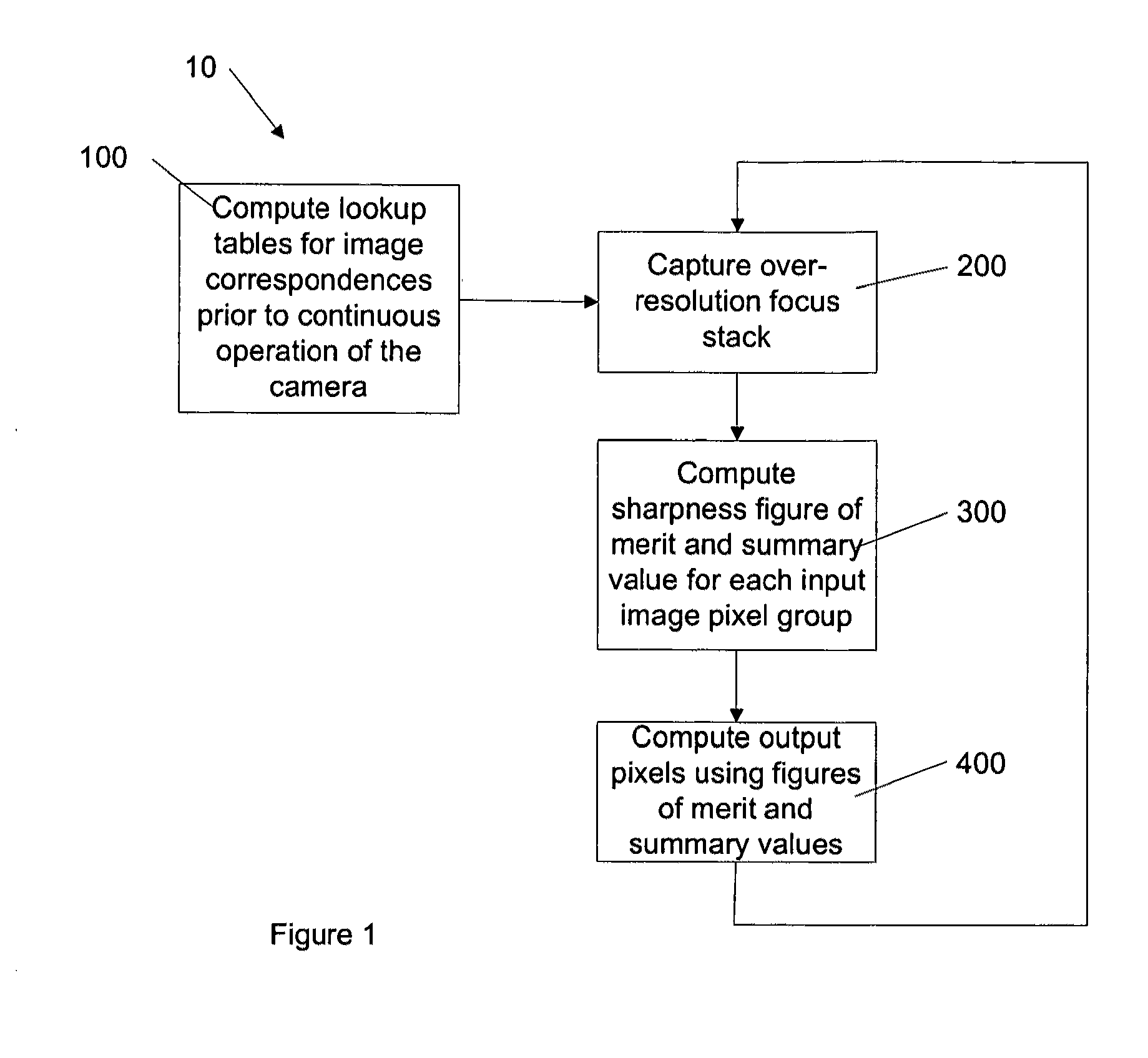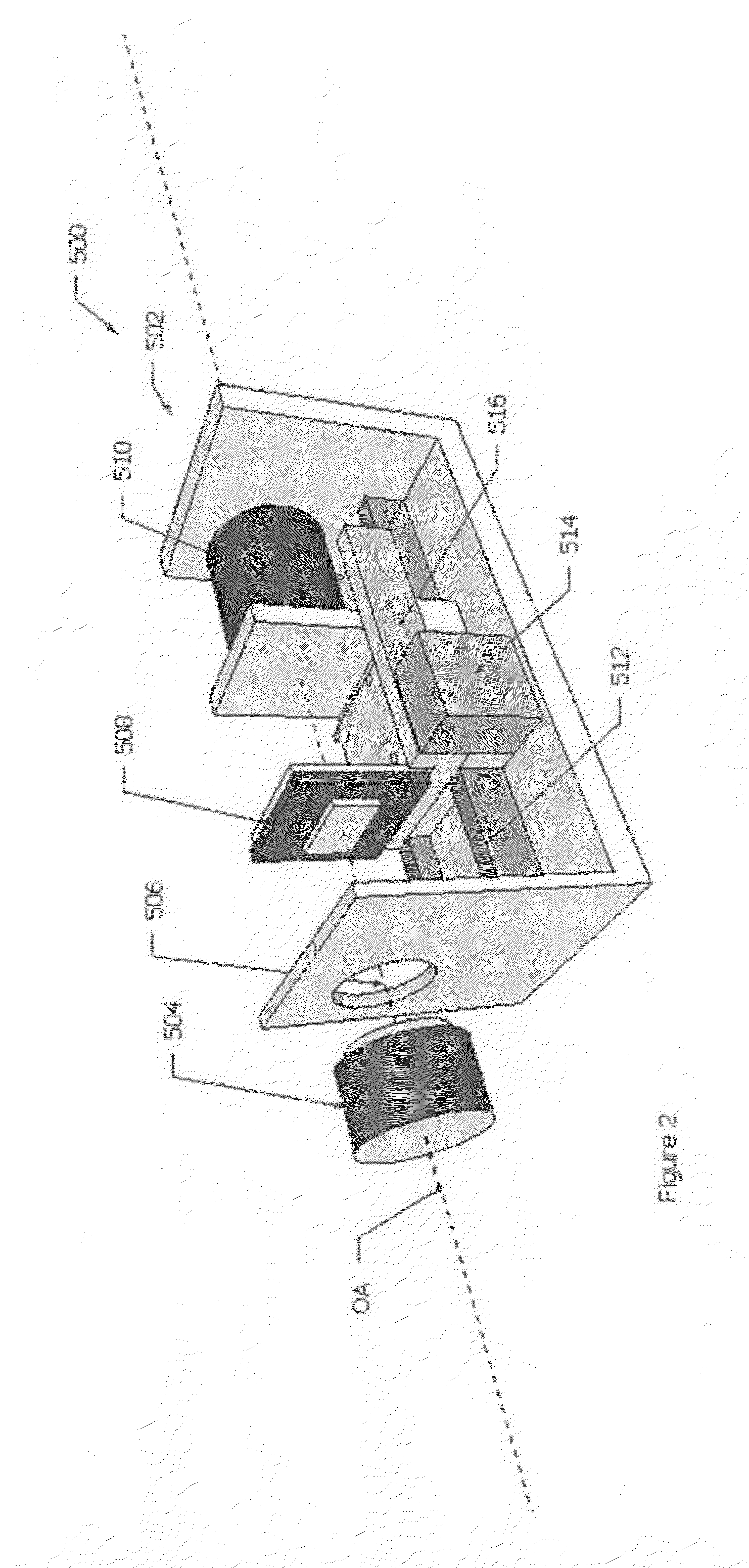Producing universally sharp images
a technology of universal sharpness and image, applied in the field of image and video photography, can solve the problems of limiting the usefulness of non-microscopic applications, requiring a high computational load for each output image computed, and difficult to image three-dimensional specimens
- Summary
- Abstract
- Description
- Claims
- Application Information
AI Technical Summary
Benefits of technology
Problems solved by technology
Method used
Image
Examples
Embodiment Construction
[0024]Turning now to FIG. 1, a flow chart showing a method of combining images to produce a universally sharp output image is shown and is generally identified by reference numeral 10. As will be discussed below, input images are captured and are defined by input pixels. The input images are captured at a higher resolution than the desired resolution of the output image. As such, a group of input pixels is identified as corresponding to each one of the output pixels. A universally sharp output image is made of output pixels each having an output pixel value that is sharply in focus.
[0025]Accordingly, method 10 begins with computing lookup tables for image correspondences between each output pixel and each group of input pixels (step 100). A focus stack of input images is captured using a focus stack capture program, wherein each input image has a different focus setting (step 200). A sharpness figure of merit and a summary pixel value are calculated for each group of input pixels (s...
PUM
 Login to View More
Login to View More Abstract
Description
Claims
Application Information
 Login to View More
Login to View More - R&D
- Intellectual Property
- Life Sciences
- Materials
- Tech Scout
- Unparalleled Data Quality
- Higher Quality Content
- 60% Fewer Hallucinations
Browse by: Latest US Patents, China's latest patents, Technical Efficacy Thesaurus, Application Domain, Technology Topic, Popular Technical Reports.
© 2025 PatSnap. All rights reserved.Legal|Privacy policy|Modern Slavery Act Transparency Statement|Sitemap|About US| Contact US: help@patsnap.com



